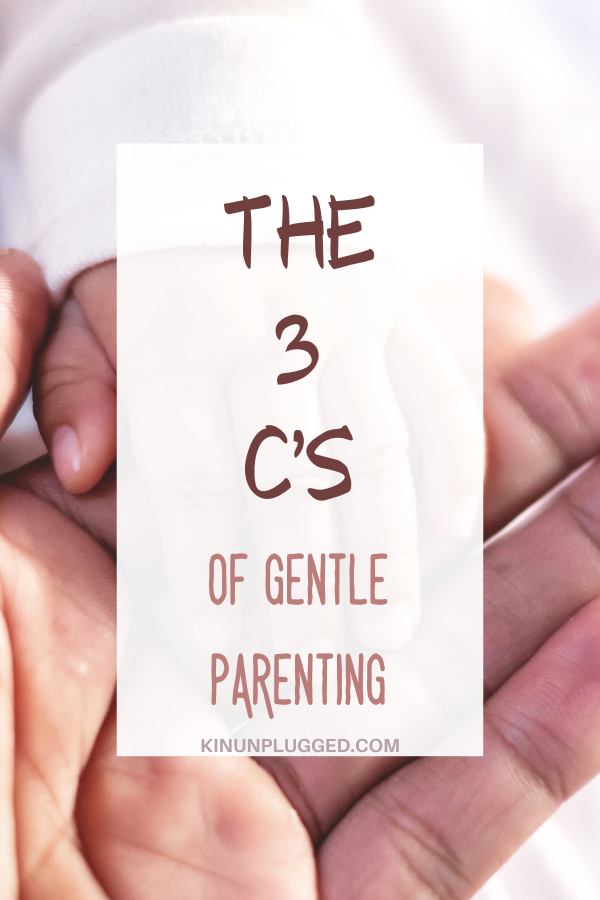Managing your toddler’s behaviour is always going to be a learning process. It doesn’t matter how many children you have or how many children you have interacted with in your life thus far. Your toddler will make you rethink everything! More recently, many parents are deciding that gentle parenting techniques work best for them.
Gentle parenting techniques are all about empathy and thoughtful communication.
Both gentle and positive parenting approaches have become more popularised in recent years, in no small part thanks to social media. However, they are not the same and while they can be used together, people do get them confused. If you’ve decided to adopt gentle parenting techniques with your child, this article will be helpful for you.
In this article, we will go through what the gentle parenting approach is and how it differs from the positive approach. I’ll give you practical tips for incorporating gentle parenting techniques into your daily life.
RELATED: Parenting books for toddlers abound on Amazon but the greatest ones are not always affordable. Find HERE a list of the best parenting books for toddlers that you can find on Amazon that are affordable.
What is the gentle parenting approach?
Gentle parenting is an approach that prioritizes empathy, understanding, and respectful communication in raising children. It focuses on building a strong bond between parents and their children while encouraging trust and cooperation. Instead of resorting to traditional discipline methods like punishment or rewards, gentle parenting encourages parents to connect with their children on an emotional level, validate their feelings, and guide them through positive reinforcement and problem-solving.
Central to gentle parenting is the belief that children are inherently good and capable of learning self-control and responsibility when treated with compassion and understanding. It emphasizes the importance of modeling desired behavior and providing clear boundaries in a nurturing and supportive environment.
Gentle parenting techniques encompass a wide range of strategies, including active listening, positive reinforcement, setting limits with empathy, using redirection, and teaching through example rather than coercion. These techniques aim to promote healthy emotional development, self-esteem, and autonomy in children while maintaining a strong parent-child relationship built on trust and mutual respect.
The three C’s of gentle parenting

The three C’s of gentle parenting are connection, communication, and cooperation.
1. Connection
This involves building a strong emotional bond with your child by prioritizing quality time together, active listening, and empathy. Through connection, parents can understand their child’s needs, emotions, and perspective, encouraging a sense of security and trust.
2. Communication
Effective communication is key in gentle parenting. It involves expressing feelings openly, using positive language, and maintaining respectful dialogue with your child. Clear and honest communication helps in setting expectations, resolving conflicts, and nurturing a supportive environment where both parents and children feel heard and understood.
3. Cooperation
Gentle parenting promotes cooperation rather than coercion. It involves working collaboratively with your child to find solutions, setting limits with empathy, and encouraging independence through guidance and support. By involving children in decision-making and problem-solving processes, parents can empower them to become responsible and respectful individuals.
Gentle parenting techniques, such as active listening and setting limits with empathy, are employed to cultivate these three C’s, encouraging a nurturing and supportive parent-child relationship based on understanding and mutual respect.
What are the 4 pillars of gentle parenting?

The four pillars of gentle parenting are respect, understanding, connection and guidance.
1. Respect
Gentle parenting emphasizes treating children with dignity and acknowledging their individuality. It involves respecting their feelings, opinions, and autonomy. Parents using gentle parenting techniques strive to avoid punitive measures and instead focus on communicating respectfully, setting boundaries with empathy and valuing their child’s perspectives.
2. Understanding
This pillar emphasizes empathy and compassion towards children. Gentle parenting encourages parents to understand the underlying reasons behind their child’s behavior, recognizing that all behavior is a form of communication. By empathizing with their child’s emotions and needs, parents can respond in ways that validate their feelings and promote positive growth and development.
3. Connection
Building a strong emotional bond with children is central to gentle parenting. Parents prioritize spending quality time with their children, engaging in meaningful interactions, and encouraging a sense of security and trust. Through connection, parents can better understand their child’s needs and emotions, leading to more effective communication and cooperation.
4. Guidance
Gentle parenting involves providing guidance and support to help children navigate the world around them. This includes setting clear expectations, teaching appropriate behavior through modeling, and using positive reinforcement to encourage desired actions. Gentle parenting techniques focus on guiding children with patience and understanding, rather than resorting to punishment or coercion.
By incorporating gentle parenting techniques that align with these four pillars, parents can create a supportive environment that promotes healthy emotional development and strengthens the parent-child relationship.
What is positive parenting vs gentle parenting?
Positive parenting and gentle parenting share many similarities in their approaches to raising children but there are also some distinctions between the two.
Positive parenting emphasizes the use of positive reinforcement, encouragement, and praise to promote desired behaviors in children.
It focuses on building a supportive and nurturing environment where children feel valued and respected. Positive parenting often involves setting clear expectations, offering choices and using rewards to reinforce good behavior.
On the other hand, gentle parenting goes beyond positive reinforcement and also prioritizes empathy, understanding and connection in parent-child relationships. Gentle parenting emphasizes respectful communication, validation of emotions and guiding children through challenges with patience and compassion. It seeks to address the underlying reasons behind behavior and encourage a strong bond between parent and child.
While positive parenting may incorporate elements of gentle parenting, such as using praise and encouragement, gentle parenting often extends further by advocating for non-punitive discipline methods and prioritizing emotional connection over behavior modification.
For example, in the context of toddler discipline, positive parenting might involve using praise and rewards to encourage desired behaviors, while gentle parenting may focus on understanding and addressing the underlying needs or emotions driving the behavior. Positive discipline for toddlers could include techniques such as positive reinforcement and setting clear expectations, while gentle parenting might also involve active listening, empathy, and guiding the child with respect and understanding.
For further clarity and to give a more visual representation of the differences, here is a comparison table:
| Aspect | Positive Parenting | Gentle Parenting |
| Approach | Emphasizes positive reinforcement and encouragement | Focuses on empathy, understanding, and respectful communication |
| Discipline | Uses rewards and praise to promote desired behaviors | Advocates for non-punitive discipline methods and prioritizes emotional connection |
| Communication | Encourages clear and positive communication | Prioritizes empathy and validation of emotions |
| Behavior Management | Focuses on reinforcing good behavior through praise | Emphasizes understanding and addressing the underlying reasons behind behavior |
| Relationship Dynamics | Strives to build a supportive and nurturing environment | Aims to strengthen the parent-child bond through empathy and connection |
| Problem-Solving | Offers solutions and alternatives to address challenges | Seeks to guide children through challenges with patience and compassion |
| Parental Involvement | Encourages active participation and engagement | Promotes involvement in a way that respects the child’s autonomy and feelings |
| Boundaries | Sets clear expectations and boundaries | Establishes boundaries with empathy and understanding |
| Emotional Development | Supports emotional development through positive interactions | Encourages emotional development by validating and addressing emotions |
| Autonomy | Values independence and decision-making | Encourages independence while maintaining a strong parent-child bond |
Both positive parenting and gentle parenting aim to promote healthy child development and strengthen the parent-child relationship but they differ in their approaches to discipline, communication and the parent-child dynamic. Positive parenting focuses on reinforcing positive behaviors through rewards and praise, while gentle parenting emphasizes empathy, understanding and non-punitive discipline methods.
4 positive strategies for reducing challenging toddler behaviors

Here are four positive strategies for reducing challenging toddler behaviors:
- Positive reinforcement. Use praise and encouragement to reinforce desired behaviors. When your toddler exhibits positive behavior, such as sharing toys or using manners, offer specific praise to acknowledge their efforts. For example, saying, “Great job sharing your toys with your friend!” or “I appreciate how you used your words to ask for help.”
- Consistent routine. Establish a predictable daily routine to provide structure and stability for your toddler. Consistency helps toddlers feel secure and reduces anxiety, which can lead to fewer challenging behaviors. Maintain regular meal times, nap times, and bedtime routines to support your toddler’s emotional regulation and overall well-being.
- Redirecting attention. When your toddler engages in challenging behavior, redirect their attention to a more appropriate activity or behavior. Offer alternative choices or distractions to help them shift focus away from the challenging behavior. For example, if your toddler is throwing toys, gently guide them toward a different activity or suggest playing with a different toy.
- Positive parenting techniques. Utilize positive parenting techniques, such as active listening, empathy, and positive reinforcement, to encourage a supportive and nurturing environment. Practice active listening by validating your toddler’s feelings and offering comfort when they’re upset. Use empathy to understand their perspective and communicate with them respectfully. Also, reinforce positive behaviors by praising and acknowledging your toddler’s efforts in managing their emotions and behaviors.
By implementing these positive strategies consistently, you can promote healthy Toddler behavior management and reduce challenging behaviors in a supportive and constructive manner.
To all the parents out there navigating the wild and wonderful journey of toddlerhood, I want to offer you a heartfelt encouragement as you try to change up the way you treat your kids.
Parenting toddlers is no small feat, and it’s completely normal to feel overwhelmed or uncertain at times. But the fact that you’re here, seeking new ways to connect with and guide your little ones, speaks volumes about your dedication and love as a parent.
Embracing positive changes in the way you interact with your toddlers can be transformative for both you and your children. Whether you’re exploring positive parenting techniques, gentle parenting approaches, or a combination of both, keep in mind that every small step you take makes a big difference.
Be gentle with yourself as you navigate this journey. Parenting is a learning process, and it’s okay to make mistakes along the way. What matters most is your willingness to grow, adapt and nurture a strong, loving relationship with your toddlers.
You’ve got this! Keep listening, keep learning and keep showering your little ones with love and understanding. Your efforts today will shape the confident, compassionate adults they’ll become tomorrow. Trust in your instincts, believe in the power of positive change, and cherish every precious moment with your amazing toddlers.
Here are some deep, interesting and always apt parenting quotes to boost confidence on those difficult days of parenthood: 15 Parenting quotes to boost confidence on difficult days





